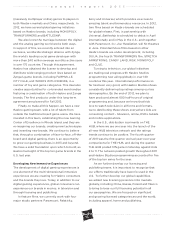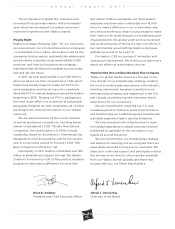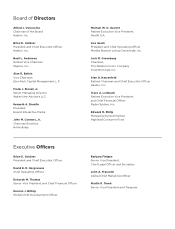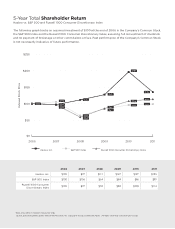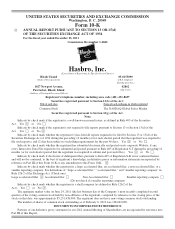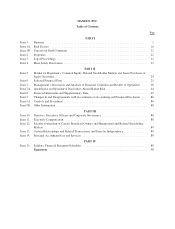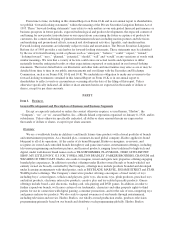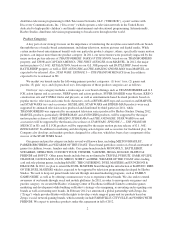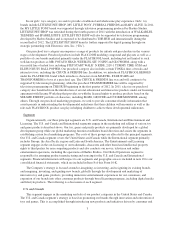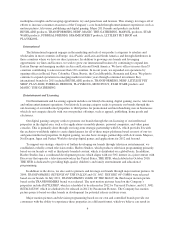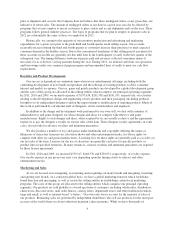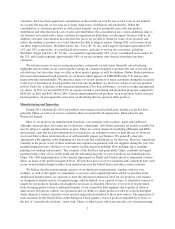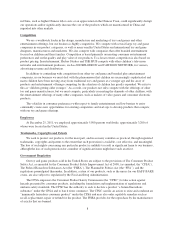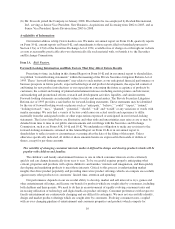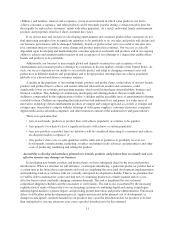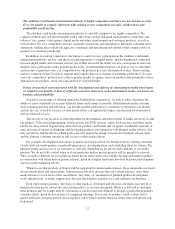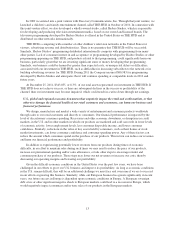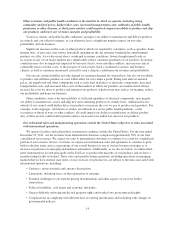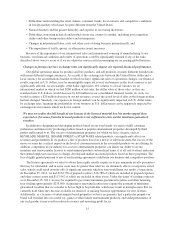Hasbro 2011 Annual Report Download - page 14
Download and view the complete annual report
Please find page 14 of the 2011 Hasbro annual report below. You can navigate through the pages in the report by either clicking on the pages listed below, or by using the keyword search tool below to find specific information within the annual report.
increased product sales, royalty revenues, and overall brand awareness. To a lesser extent, we can also earn
revenue from our participation in the financial results of motion pictures and related DVD releases and through
the distribution of television programming. Revenue from toy and game product sales is a component of the U.S.
and Canada and International segments, while royalty revenues, including revenues earned from movies and
television programming, is included in the Entertainment and Licensing segment.
Global Operations
In our Global Operations segment, we manufacture and source production of substantially all of our toy and
game products. The Company owns and operates manufacturing facilities in East Longmeadow, Massachusetts
and Waterford, Ireland which predominantly produce games and puzzles. Sourcing of our other production is
done through unrelated third party manufacturers in various Far East countries, principally China, using a Hong
Kong based wholly-owned subsidiary operation for quality control and order coordination purposes. See
“Manufacturing and Importing” below for more details concerning overseas manufacturing and sourcing.
Other Information
To further extend our range of products in the various segments of our business, we sell a portion of our toy
and game products directly to retailers on a direct import basis from the Far East. These sales are reflected in the
revenue of the related segment where the customer resides.
Certain of our products are licensed to other companies for sale in selected countries where we do not
otherwise have a direct business presence.
During 2011, net revenues generated from TRANSFORMERS and BEYBLADE products were
approximately $483,000 and $477,000, respectively, which were 11.3% and 11.1%, respectively, of our
consolidated net revenues for that year. During 2010, net revenues generated from NERF products were
approximately $414,000, which was 10.3% of our consolidated net revenues for that year. During 2009, net
revenues generated from TRANSFORMERS products were approximately $592,000, which was 14.5% of our
consolidated net revenues in that year. No other line of products constituted 10% or more of our consolidated net
revenues in 2011, 2010 or 2009.
Working Capital Requirements
Our working capital needs are primarily financed through cash generated from operations and, when
necessary, proceeds from short-term borrowings. Our borrowings generally reach peak levels during the third or
fourth quarter of each year. This corresponds to the time of year when our receivables also generally reach peak
levels as part of the production and shipment of product in preparation for the holiday season. The strategy of
retailers has generally been to make a higher percentage of their purchases of toy and game products within or
close to the fourth quarter holiday consumer buying season, which includes Christmas. We expect that retailers
will continue to follow this strategy. Our historical revenue pattern is one in which the second half of the year is
more significant to our overall business than the first half. In 2011, the second half of the year accounted for
approximately 63% of full year revenues with the third and fourth quarters accounting for 32% and 31% of full
year revenues, respectively.
The toy and game business is also characterized by customer order patterns which vary from year to year
largely because of differences each year in the degree of consumer acceptance of product lines, product
availability, marketing strategies and inventory policies of retailers, the dates of theatrical releases of major
motion pictures for which we offer products, and changes in overall economic conditions. As a result,
comparisons of our unshipped orders on any date with those at the same date in a prior year are not necessarily
indicative of our sales for that year. Moreover, quick response inventory management practices result in fewer
orders being placed significantly in advance of shipment and more orders being placed for immediate delivery.
Recent trends have shown that retailers are timing their orders so that they are being filled by suppliers, such as
us, closer to the time of purchase by consumers. Although the Company may receive orders from customers in
advance, it is a general industry practice that these orders are subject to amendment or cancellation by customers
5


